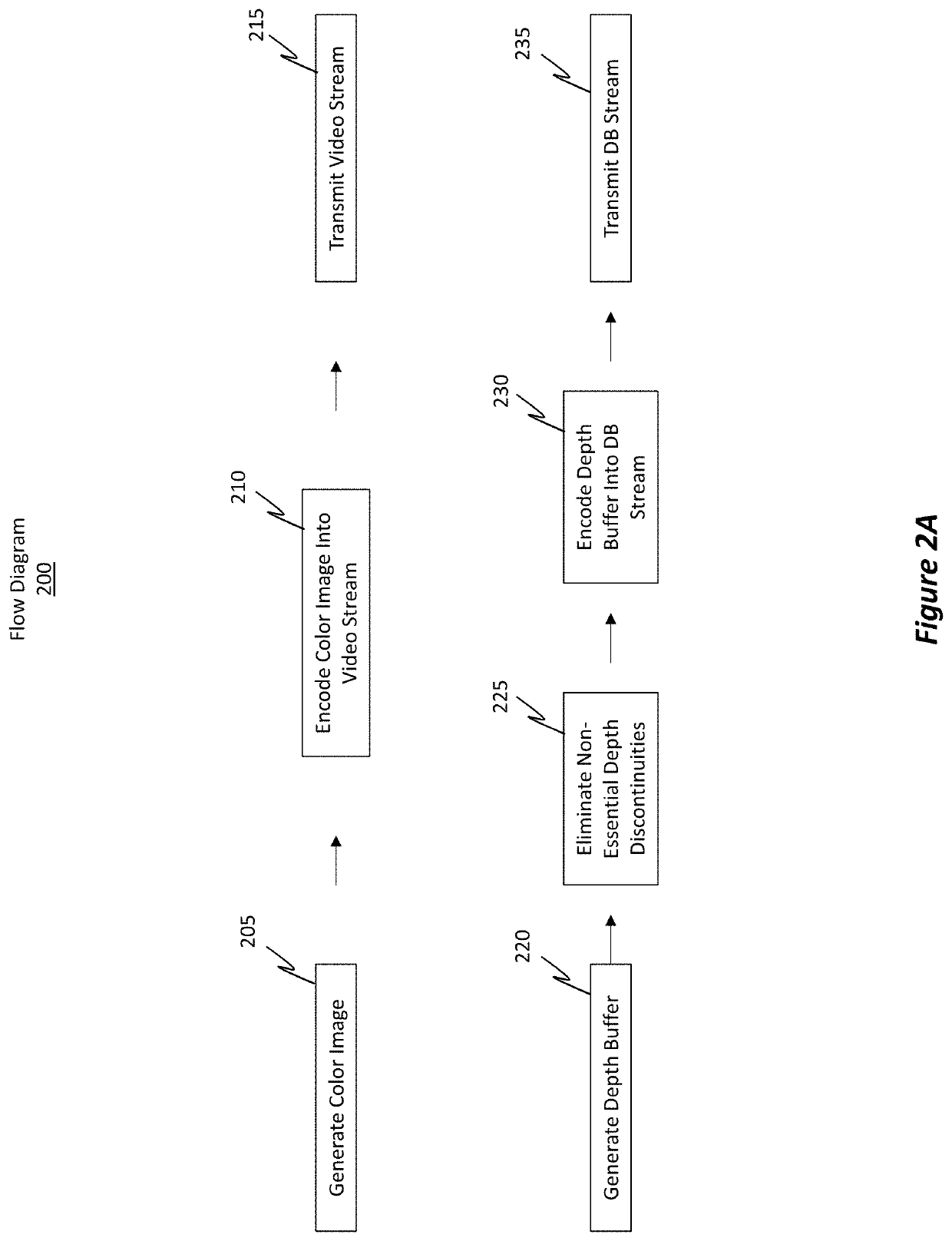Depth buffer dilation for remote rendering
- Summary
- Abstract
- Description
- Claims
- Application Information
AI Technical Summary
Benefits of technology
Problems solved by technology
Method used
Image
Examples
Embodiment Construction
[0025]Embodiments disclosed herein improve the transmission efficiency of color images (i.e. holograms) between a remote rendering service and an HMD as well as improve the reprojection efficiency of those color images once they are received by the HMD.
[0026]In some embodiments, a color image is generated to include a first content region, a second content region, and an overlap region where the second content region at least partially overlaps the first content region. A depth buffer includes depth values for the pixels in the color image. The depth buffer also distinguishes between a first set of depth values for the first content region, a second set of depth values for the second content region, and a third set of depth values for a non-content region included in the color image. The embodiments then identify essential depth discontinuities and non-essential depth discontinuities in the depth buffer. “Essential” depth discontinuities are depth discontinuities located within the ...
PUM
 Login to View More
Login to View More Abstract
Description
Claims
Application Information
 Login to View More
Login to View More - R&D
- Intellectual Property
- Life Sciences
- Materials
- Tech Scout
- Unparalleled Data Quality
- Higher Quality Content
- 60% Fewer Hallucinations
Browse by: Latest US Patents, China's latest patents, Technical Efficacy Thesaurus, Application Domain, Technology Topic, Popular Technical Reports.
© 2025 PatSnap. All rights reserved.Legal|Privacy policy|Modern Slavery Act Transparency Statement|Sitemap|About US| Contact US: help@patsnap.com



